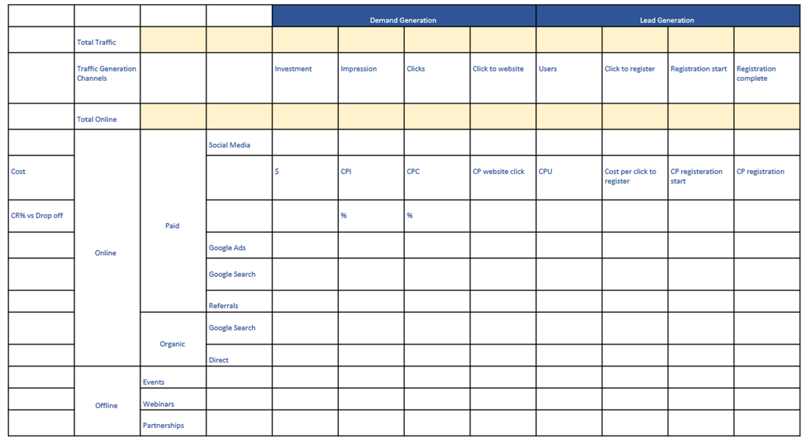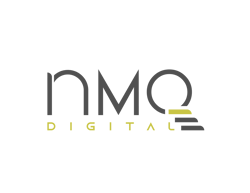Running a business is a complex and challenging endeavor, with a multitude of obstacles and hurdles to overcome. From managing finances and employees to keeping up with changing technologies and market trends, there are numerous challenges that business owners and managers must navigate in order to achieve success. Moreover, the competitive landscape is constantly evolving, with new players entering the market and established businesses innovating to maintain their edge. In this fast-paced and dynamic environment, it's essential for businesses to stay adaptable, resilient, and focused on their goals. In this article, we will explore how companies can overcome these obstacles by creating sustainable solutions for their challenges in a step-by-step manner.
What is our Six-Step Solution Framework
Our Six-Step Solution Framework is tailored to companies seeking a systematic and structured approach to problem-solving. Our solution addresses various business challenges such as enhancing customer satisfaction, increasing employee engagement, or streamlining operations through a step-by-step process that ensures efficient and effective problem identification, analysis, and resolution. Whether your company is aware of existing problems but unsure of where to start or is aware something is off but cannot locate the problem, our solution framework is suited for both scenarios. It offers a reliable methodology to understand the root causes of the problem and resolve them permanently.
The Six Steps of The Solution Framework
If you are aware of the challenge your company is facing, it is essential to gain a clear understanding of its impact before embarking on the problem-solving process. On the other hand, if you are not yet aware of the specific challenge, you can begin with the first step of the process.
For instance, let us assume that your company's challenge is the high cost of customer acquisition. In such cases, the return on investment from a customer can be achieved by either retaining them for an extended period or cultivating their loyalty, leading to repeat purchases and eventual profits. This is particularly challenging for B2C companies, as B2B companies typically have larger deal sizes. While lower acquisition costs can lead to higher profits, B2C companies tend to struggle with this challenge more than B2B companies.
Now let us see how we can uncover the root causes of this real challenge using our six-step solution framework.
Step 1: Assessment
The first step in our solution framework is the assessment phase. In this step, you analyze end-to-end consumer journey data from a previous period to gain insights into the organization's pain points. The availability of the data and duration of this exercise dictate the next course of action.
For example, suppose we are in Q3. We want to map our E2E customer journey for Q1 or Q2 and for that, you can use an Excel sheet, Miro, or any other platform that you prefer. I prefer Excel as it allows for changes or updates and is quite flexible. This mapping should begin with demand generation, lead generation (mainly website), conversion (sales for B2B, transactions for B2C), and retention. You can outline all the online or offline channels which you use to generate traffic, including their actual metrics such as clicks and downloads. Additionally, you should include the total spending and calculate the conversion rates, drop-off rates, and cost of each metric across the funnel for each step.
When you are mapping the channels, you can use as many levels of detail as you prefer, starting from groups and then diving deeper into each group's channels to obtain data for each specific channel. For instance, you can obtain data for Facebook, Instagram, and other social media channels under the social media group. You can also categorize your channels as either paid or non-paid. A small portion of this process is shown below. Ideally, this data-gathering process should take 1-2 weeks.

Often the data-gathering process may take longer than anticipated, sometimes exceeding a month, or it may not be possible to obtain the data due to various challenges such as organizational silos, data unavailability, and manual or ad-hoc data measurement. However, upon completing this stage, you will have a comprehensive understanding of channel performance and the cost per channel to acquire customers. You will also have a broad awareness of the organization's challenges and pain points.
Step2: Starting with pains
In this step, the focus is on identifying/verifying pain points by engaging with various stakeholders within the organization. By speaking to different individuals for just 30 minutes and asking what they would change in the organization if given the authority to do so, you would be amazed at the amount of information that can be gathered.
Building on the previous example, you would already have identified some issues that require attention in Step 1. Here, you would engage with stakeholders from various departments such as marketing, sales, data, and customer service. For instance, in a B2B scenario, the sales team may express concerns about the quality of leads generated by the marketing team, while the marketing team may point out that the sales team's performance is not satisfactory, or both teams might provide more challenges within their own teams.
Step 3: Identify Root Causes with "Why"
This step involves investigating the underlying causes of the challenges identified in the previous step. By repeatedly asking the question "why," we can dig deeper into the main reasons behind the challenges we face. To support our assumptions, we may need additional data. Once we have identified the root cause, our strategy should be to eliminate it completely, so that all other issues can be resolved more easily.
Continuing with the previous example, our challenge is high customer acquisition costs. Why? Because our website has poor conversion rates. Why? Because visitors leave within five seconds of arriving on the landing page, and our conversion rate is only 30%. Why? Either we are not attracting the right audience or our content is not engaging enough. Let's assume we agree that the main reason is that our value proposition is not aligned with our target audience. Why? Perhaps we lack sufficient data to segment and understand our customers and target audience better, or we are unclear about our value proposition. The list goes on, but all these assumptions or root causes should be backed up by data that we captured in the beginning. However, for now, let's focus on the fact that our value proposition does not match our target audience.
Step 4: Defining the Ideal State and Requirements for People, Processes, and Technology for Different Teams
In this step, we define our ideal vision for how we want things to operate end-to-end and what it means for different teams in terms of people, processes, and technology.
Building on the previous example, in the ideal state, we aim to have a well-defined target audience with different personas whose needs align with our value proposition and who have a high potential to purchase from us. This means we continuously review our value proposition and target audience, conduct research through surveys or feedback, and use this information to adapt and update our marketing communications and content strategy accordingly. We have a dashboard that helps us to analyze our data, provided by the data team. Our sales team specifies the specific reason why a customer chose to work with us or why we lost a certain customer. The customer service team provides us with insights into customer needs and challenges. As an organization, we work integrated, and each team updates each other via recurrent meetings or via a specific platform.
Step 5: Mapping Capabilities and Conducting Gap Analysis
At this stage, we assess our current process, technology, and talent capabilities to determine the gaps between our current state and the ideal state we defined in the previous step. The larger the gap, the greater the change and effort required.
Continuing from the previous example, we need to evaluate if we have the resources and capacity to conduct continuous research and analysis, or if we need to allocate a budget for that purpose. Do we need a different system or approach to achieve our ideal state? Perhaps we simply need to expand our research capacity and improve the analysis of our existing data. For instance, we might aim to update our target audience by the next quarter and run our first campaign with the new target audience, along with new content and communication strategies in Q1 next year.
Step 6: Identifying Key Actions for Achieving the Ideal Stage
In this step, we create a list of key actions that will help us achieve the ideal stage we have defined. These actions can be both short-term and long-term, and we recommend starting with short-term actions in parallel with long-term ones to show early benefits and gain stakeholder buy-in.
Continuing from the previous example, the key actions could include gaining management buy-in for increasing the budget for research and data analysis, creating a dashboard for a better understanding of current customers, and updating marketing communication and content strategy once we have a clear picture of our new target audience. We might also need to have a new way of working as a team, maybe we need to have meetings with different teams on a monthly base, such as Smarketing Meetings. By implementing these actions, we can move closer to our ideal stage and improve our channel performance. We should be careful though not to be over-promising. Any key action we create should refer to a SMART KPI and should have a time boundary.
As you can see, we were able to identify the root causes of the high cost of acquisition and create action points to avoid these challenges by simply following our solution framework in a systematic way.
In a nutshell, the six-step solution framework provides a systematic approach for businesses to tackle the challenges they face. It involves assessment by gathering data and analyzing it, identifying the pains in the organization, finding out the root causes, creating the ideal state, doing an as-is and gap analysis, and listing down the key actions to arrive at the ideal state. By following this framework, businesses can ensure that they have a structured process in place for problem-solving that is both efficient and effective. If you are curious and would like to learn more about it, NMQ Digital is here to help you with its Digital Consultancy Services.





